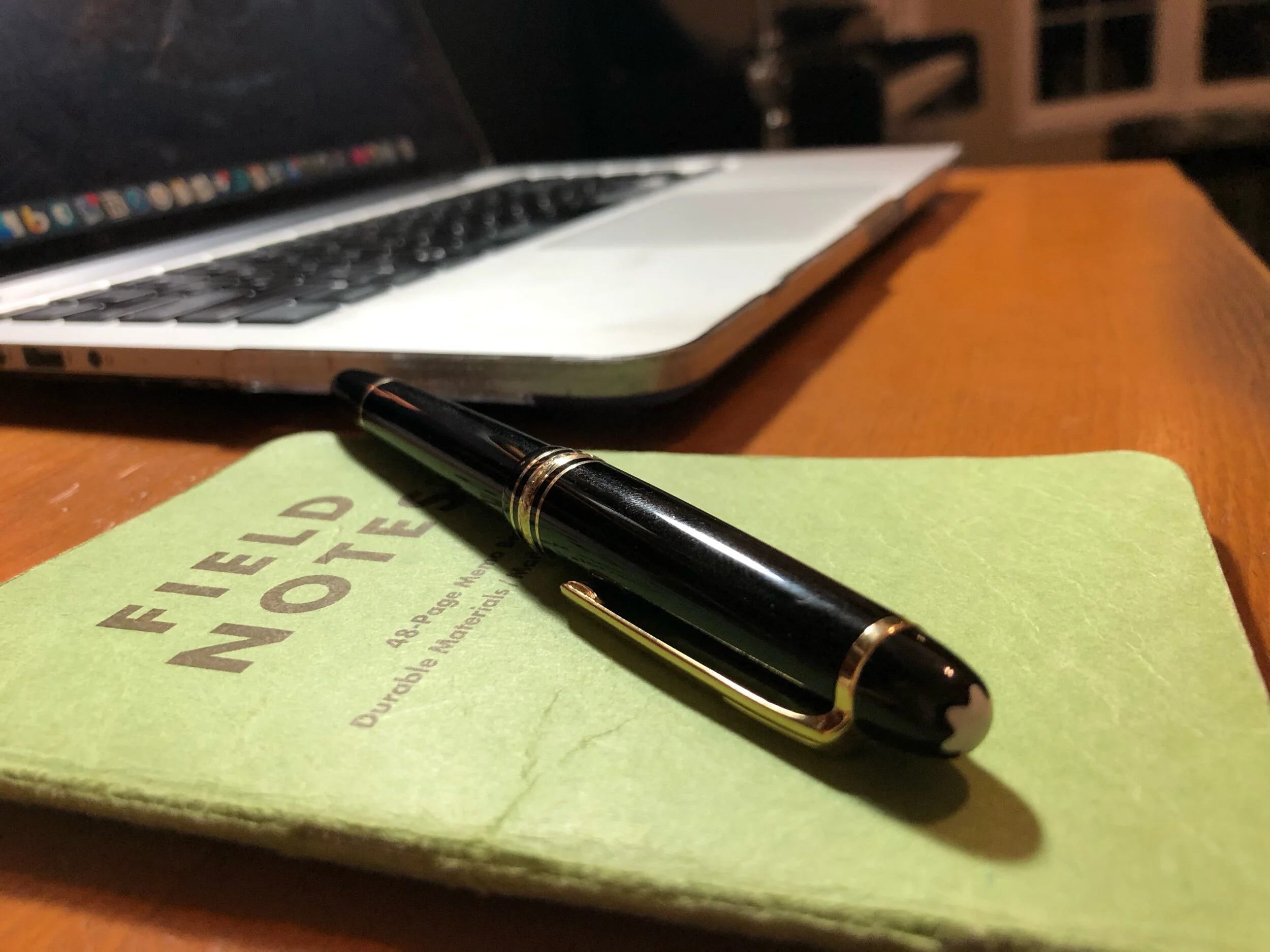The other day I had a realization that although I make my living as a musician, most of my core operating models and principles are not taken from the field of music.
Over the years, I’ve developed a way of thinking, planning, and working that draws on models and systems from a wide assortment of writers and thinkers. The ideas that work for me are the result of a lot of experimentation and tinkering over the course of years. When determining your own operating principles, the important things are to read widely, understand what drives you to work creatively, and discover what scaffolding you need in order to get your best work done. This is the way to create a scalable, repeatable system that can weather the ups and downs of professional and personal life (2020 is the perfect example).
Some of these concepts are frameworks for thinking, while others are well-developed systems. All of these are ideas formulated by others, are things that I’ve practiced over time, and found to work for me.
1. Neuroplasticity. There is a growing body of research in this relatively new field which shows that the brain’s power to remap itself, even under conditions of extreme disability, can allow us to heal, compensate, and grow throughout our lifespan. Two useful books on this subject are Norman Doidge’s The Brain That Heals Itself and Caroline Leaf’s Switch On Your Brain.
2. Growth Mindset. This is a concept that grew out of Carol Dweck’s work on motivation and mindsets (see her TED talk here). In order for neuroplasticity to happen, we need to have the belief that we can grow our core abilities through dedication and hard work. For me, this manifests as an intrinsic desire for continual professional development, even if it results in a few dead ends and tinkering that doesn’t always yield effective results. But when COVID-19 hit, the openness to change enabled me to move our entire studio operations online and identify developing trends in the music education field.
3. Little and Often. I’ve got too much stuff to do. One of the ways that I avoid paralysis is by working at important things for a short time, put them away, do something else, then work on them again a while later. I learned this concept from Mark Forster in his book Secrets of Productive Poeple and found that it helps me to develop a rhythm and clarity that helps me power through difficult things. This idea also works extraordinarily well with practicing an instrument.
4. Getting Things Done. An important part of being able to function at work or home is how to deal with the multiple inputs of email, phone messages, and daily life, put them into relevant contexts and projects, organize our priorities, and do the things that need to be accomplished. At the same time, we need our everyday stuff to be congruent with our medium- and long-term horizons. David Allen’s Getting Things Done system (aka GTD) has been a mainstay of my daily process since 2007.
5. Inbox Zero. We’re all deluged by a mountain of email in our inbox. Merlin Mann’s Inbox Zero system (originally devised as a natural next step from David Allen’s GTD system) helps you to maintain control of your expanding inbox with three simple steps: reply, archive, or delete. Now that we have multiple inboxes, it also becomes increasingly important to identify key areas of focus and learn how to triage our email.
6. Plus Minus Next. Developed by Ness Labs’ Anne-Laure Le Cunff, Plus Minus Next is a short weekly journaling practice were you take stock of what worked and what didn’t over the last week, as well as what the next steps are for the coming week. This is a great way to maintain direction over changing contexts and situations from week to week.
7. A Morning Routine. This is by far the most pliable, and the one for which an ideal solution for me might not exist, and if it does, would need to change over time. Starting off the day, early, with the right focused activity can set the stage for the entire day. I’ve tried many different systems over the years, including Morning Pages, the 21-Day Brain Detox, meditation, yoga reading, blogging. All of them work, just not all the time, depending on my mood and situation. A rotation between several of these over the course of time is what works the best. But for me, the important things to consider are getting up early (6:15 is ideal), brewing amazing coffee, and launching into a focused activity right away.
8. Zettelkasten. When developing an idea in creative work, we need an organized place where chaos can live, and which allows us to make the connections that can lead to meaningful output. Nicholas Luhmann was a sociologist who developed a system of writing ideas on index cards and putting them in a slip-box (Zettelkasten in German). He then reviewed these cards regularly in order to find connections between them. The connections he discovered between them led to a steady body of work throughout his career: 58 books and hundreds of articles. In the last few years, there has been significant work in the tech community to create tools that can help to uncover connections between ideas with programs such as The Archive, Roam Research, and Obsidian, to name just a few.
9. Antifragility. Stress and random crap that happen to us (like trying to stay afloat in a pandemic) can be beneficial rather than negative, especially if we take responsibility for our actions and have skin in the game. One of the most important and challenging concepts in Nassim Taleb’s work is antifragility - being able to gain from volatility, randomness, and disorder. I highly recommend Taleb’s book on the subject, and although it’s a long read, it’s highly entertaining and informative, with many applications in real life.







